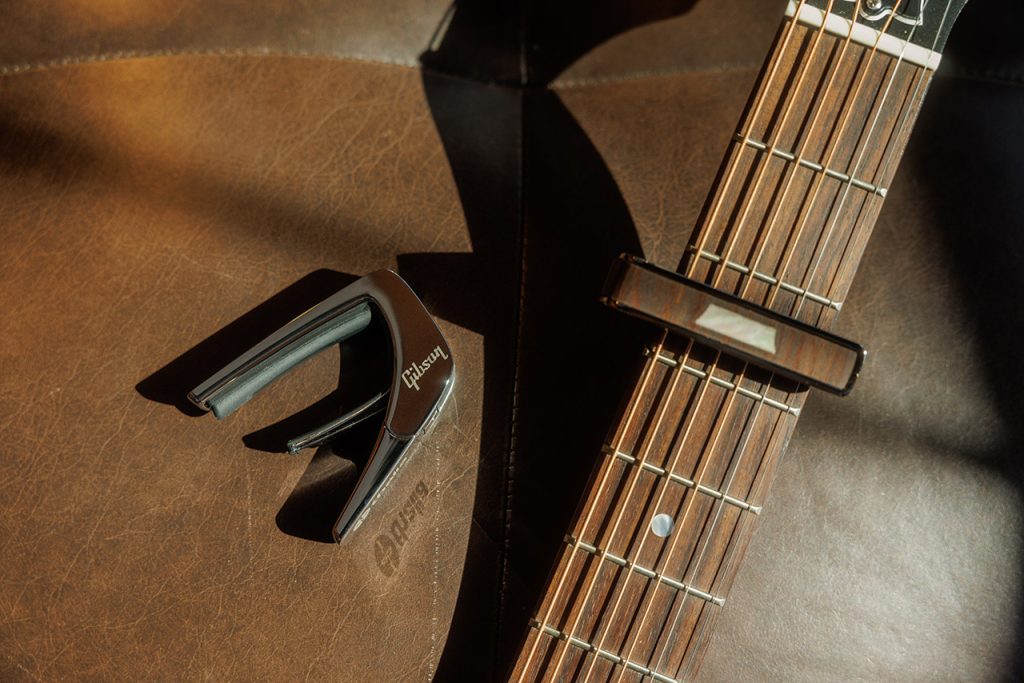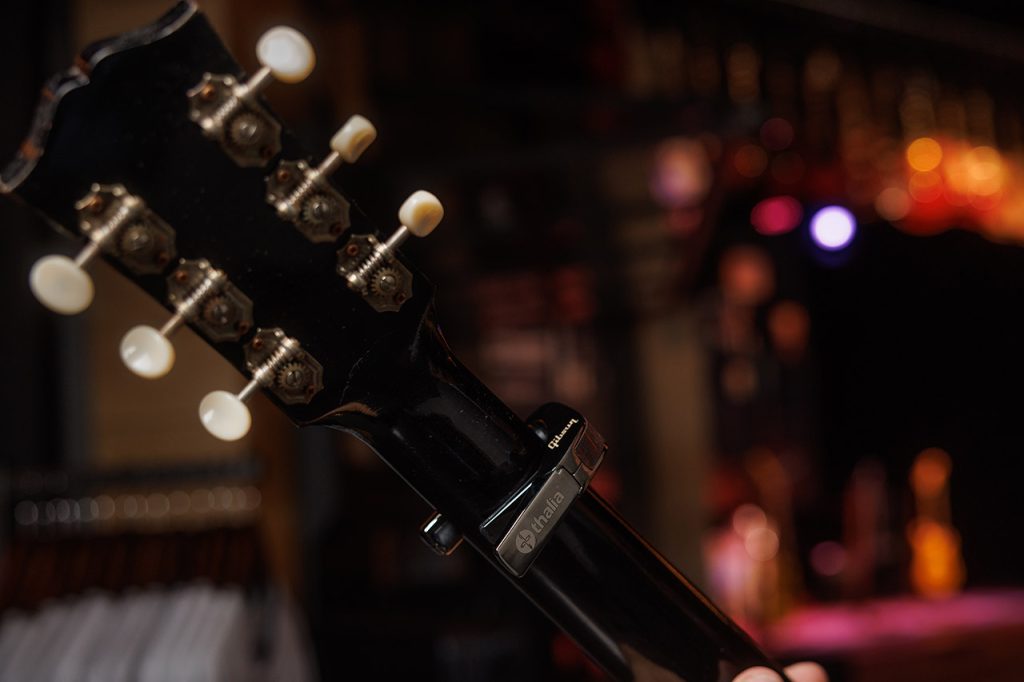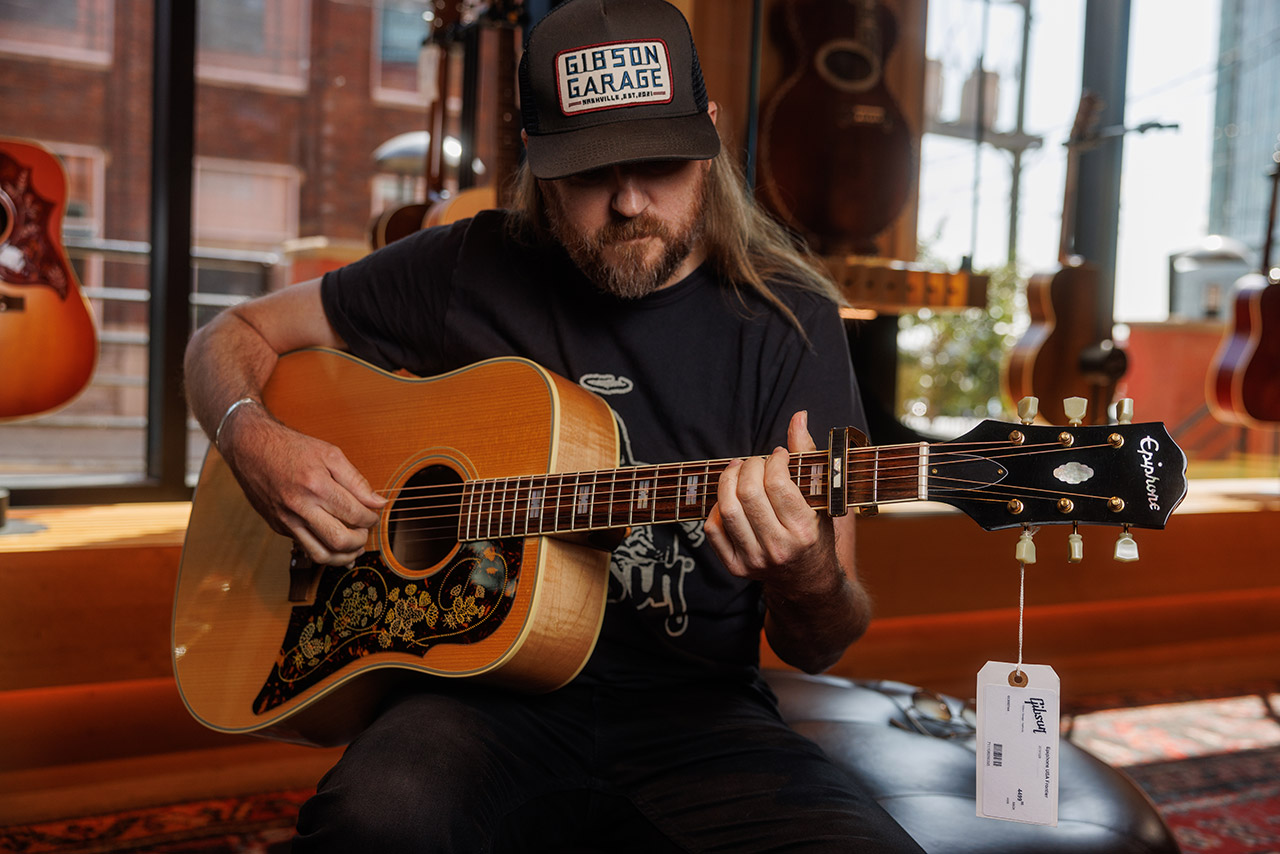Understanding the different uses of guitar capos and how to place them
No matter how long you’ve been playing the guitar, there’s a good chance you have a capo lying around.
Whether it came with your starter guitar set or was a stocking stuffer last Christmas, you should be glad to have one. The capo might be the most underrated tool in a guitarist’s gig bag. The only question is: How do you use a capo on a guitar?
If you’ve never clamped a capo onto the neck of your guitar, you’re in the right place. Here’s how to use a capo.
What is a capo?
Before we proceed, let’s first discuss what a guitar capo is. A capo is a device a guitar player uses to change the pitch of guitar chords without altering the tuning.
It is clamped onto the guitar neck at a specific guitar capo position, such as the 2nd fret or 5th fret. It effectively shortening the open strings and allows the guitarist to play in a different key using familiar chord shapes.
This tool is essential for both electric guitar and acoustic guitar players, as it simplifies playing barre chords and chords in the open position. For instance, placing a capo on the 2nd fret and playing an E chord results in an F# chord.
Capos are highly versatile, making it easier to play songs in various keys and accommodating different vocal ranges.
How to Place a Capo on Your Guitar
To put a standard clamp capo on your guitar, follow these four steps:
- Squeeze the trigger together
- Open the “jaw” wide enough to accommodate the guitar’s neck
- Position the capo just behind your desired fret
- Gently release the trigger, closing the capo over the strings
Easy, right? It is—but if you want a clear, crisp sound, there are some best practices to remember, especially when dealing with other types of capos.

Proper Placement Techniques
The most important advice is to ensure the capo is straight up and down on the fretboard, sitting perpendicular to your strings. A crooked capo can lead to intonation problems, causing your guitar to sound out of tune.
We also recommend positioning your capo as close to the fret as possible. For example, if you’re capoing the third fret, the capo should be just behind and nearly touching the back of the third fret, but not sitting on top of it. This placement will give you the clearest sound.
Choosing the Right Fret
In most cases, if you’re learning a song using a chord sheet or guitar tabs, there should be information on which fret to capo.
However, if you’re just noodling away on your own, choosing the right fret is about finding a sound you like. For a bright, chime-like sound, place your capo at or above the fifth fret. For a deeper, more standard guitar sound, leave the capo on the first or second fret.
Tips for Using a Capo Effectively
Now that you understand how to use a capo, there’s another, more nuanced question: How do you use a capo effectively? We’re offering some guidance.
Ensuring Proper Tuning
For best results, always tune your guitar after applying a capo. If you change your guitar tuning and then position your capo, you might find that your guitar sounds out of tune.
Experimenting with Various Capo Positions
The best thing about a capo is that it lets you modify a song to your liking. By simply sliding your capo up a fret, you can change a song’s key—but continue to play the same chords.
For example, if a song is too low for your vocal range, you can move the capo up a fret or two. Suddenly, the song is in a higher key and should be easier to sing.
Songs to Play with a Capo
With your capo snugly in place, it’s time to jam to your favorite tunes. Here are some classic capo songs, as well as some modern choices (1):
- Beginner-friendly songs – Even if you’ve just picked up the guitar, you can grab a capo and strum the chords to “Wonderwall” by Oasis, “Hey, Soul Sister” by Train, and the Dolly Parton classic “Jolene.”
- Intermediate songs – As you start to find your footing on your instrument, you can experiment with capoed tunes like “Let Her Go” by Passenger, “The Sound of Silence” by Simon & Garfunkel, or the moody Porcupine Tree song “Trains.”
- Advanced songs – Once you’re confident, you might try mastering The Beatles’ “Here Comes the Sun” or the lightning-fast lead part in “I Still Want a Little More” by The Milk Carton Kids.
Capo Maintenance and Care
Like your guitar, your capo will benefit from some periodic maintenance. Luckily, caring for your capo is effortless.
Cleaning and Storing Your Capo
To keep your capo looking its best, clear any dirt and buildup from its surface with a damp cloth.
To keep your guitar sounding its best, ensure the part of the capo that touches the strings is clean and gunk-free—any grime will be transferred to the strings below, dampening their sound and shortening their life.
When you’re not using your capo, keep it in a cool, dry place. Your guitar case is an excellent choice, as is a desk drawer. Try not to leave it on the strings when you’re not playing; you can wear grooves into the soft part of the capo, which can lead to strings buzzing when you try to use the capo.

When to Replace Your Capo
Most capos should last you a lifetime. However, if you frequently use your capo, you may eventually need to buy a new one.
Consider replacing your capo if:
- The spring mechanism has worn out and won’t depress the strings properly when applied
- The soft inside has worn-in string grooves
- The capo is otherwise damaged
Choose the Right Capo for Your Guitar
Armed with the knowledge of how to use a capo, you’re ready to play any song in any key—and even write your own. All that’s left to do is pick up the perfect capo.
For that, there’s the Gibson Capo collection. With a range of gorgeous capos in different styles, you’re sure to find one that will inspire you to play every day.
Sources:
- Guitar World. 15 of the best songs played with a capo. https://www.guitarworld.com/gw-archive/top-10-guitar-songs-played-capo

